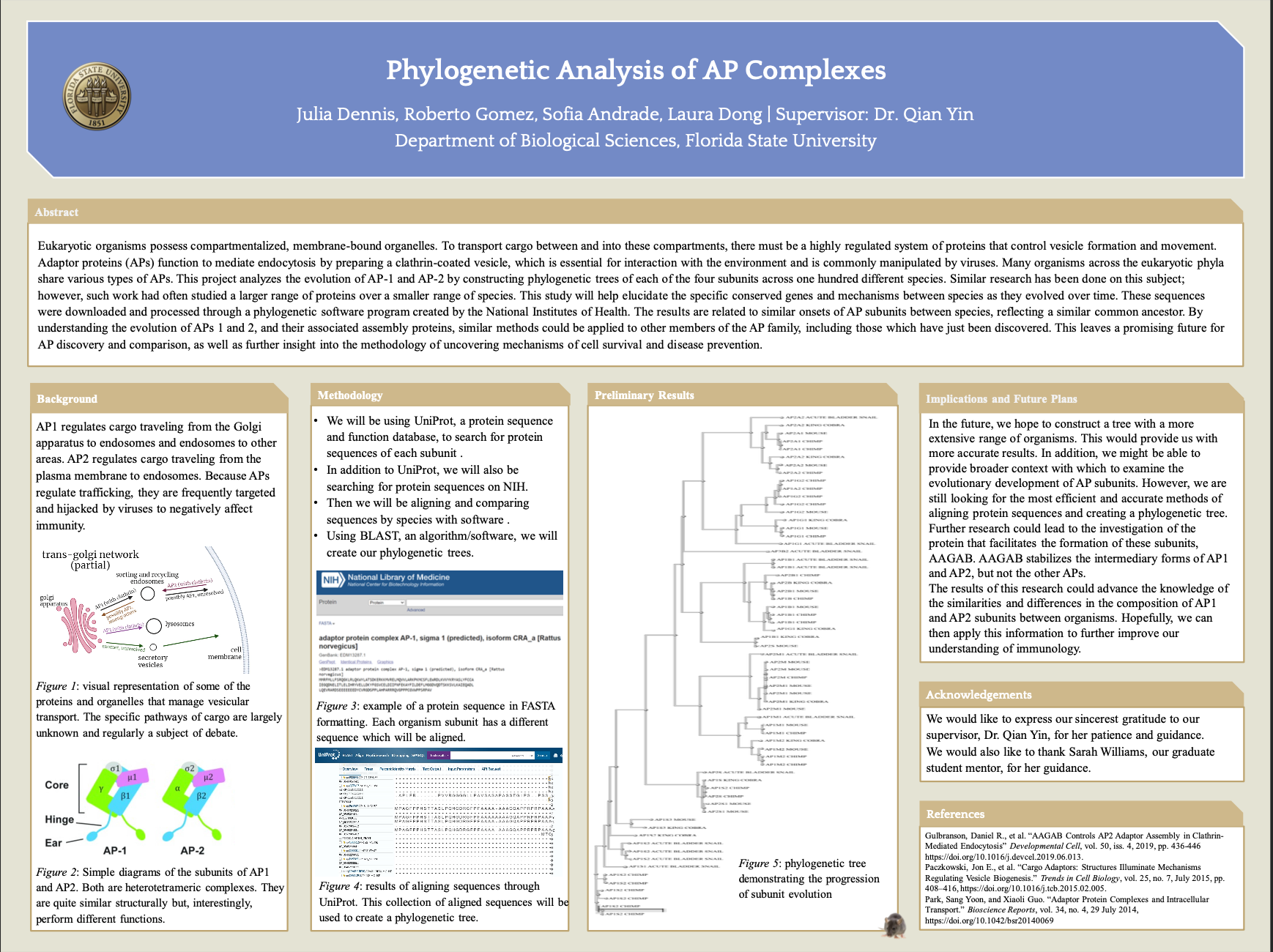Research Symposium
24th annual Undergraduate Research Symposium, April 3, 2024
Julia Dennis Poster Session 4: 2:45 pm - 3:45 pm /438

BIO
I am a third year senior from Orlando, FL. As a pre-medical student, I am passionate about evidence-based medicine and patient-centered care. Apart from this project, I am very interested in studying how infections and inflammation can influence preterm birth and neonatal outcomes.
Evolutionary Insights: Phylogenetic Analysis of AP-1 and AP-2 and their Assembly Mechanisms in Eukaryotes
Authors: Julia Dennis, Qian YinStudent Major: Biological Sciences and Public Health/Pre-medical track
Mentor: Qian Yin
Mentor's Department: Molecular Biology Mentor's College: Arts and Sciences Co-Presenters: Sofia Andrade, Roberto Gomez, Laura Dong
Abstract
In order to traffic proteins and other cellular cargo, a packaging system must be assembled to do so. Adaptor proteins (APs) function to mediate endocytosis by preparing a clathrin-coated vesicle, which is essential for cellular interaction with its environment and is manipulated in common mechanisms of viral infection. Many organisms across the various eukaryotic phyla share various types of APs. This project is analyzing the evolution of AP-1 and AP-2 by constructing phylogenetic trees of each of the four subunits across one hundred different species. Similar work has been done on this subject, however, such work often studied a larger range of proteins over a smaller range of species. This study will help elucidate the various conserved genes and mechanisms between species as they evolved over time. Various proteomic databases were consulted, including but not limited to UniProt and BLAST. These sequences were downloaded and processed through a phylogenetic software program created by the National Institutes of Health. The results are related to similar onsets of AP subunits between similar species, reflecting a similar common ancestor. By elucidating the evolution of APs 1 and 2, and their associated assembly proteins, similar methods could be applied to other members of the AP family, including those which have just been discovered. This leaves a promising future for AP discovery and comparison, as well as another insight into the methodology of uncovering mechanisms of cell survival and disease prevention.
Keywords: Evolution, Phylogenetic Analysis


